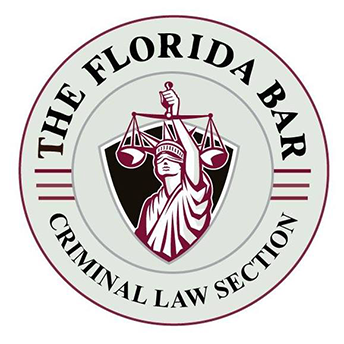Florida’s Stop and Frisk Statute
The Florida Constitution, the U.S. Constitution, and case law recognize the following three levels of citizen-police encounters:
- Level one is the consensual encounter during which a citizen is free to leave, and police contact is minimal. United States v. Mendahall, 446 U.S. 544, 100 S.C. 1870 (1980).
- Level two is an investigatory stop permissible if the officer has a well-founded articulable suspicion that the detained individual has committed, is committing, or is about to commit a crime. Terry v. Ohio, 392 U.S. 188 S.Ct. 1868 (1968).
- Level three is an arrest supported by probable cause that an offense has been committed, and the defendant is the one who committed the offense. McMaster v. State, 780 So. 2d 1026, 1028 (Fla. 5th DCA 2001).
Level two encounters are codified in Florida’s Stop and Frisk Law. § 901.151(2), Fla. Stat. The statute authorizes officers to temporarily detain an individual when the circumstances reasonably indicate the person committed, is committing, or is about to commit a criminal offense.
This article explains why Florida is a “stop and identify” state.
Florida Statute Section 901.151(2)
Probable cause for an arrest is not needed for the investigatory stop to be legal. See e.g Baggett v. State, 849 So. 2d 1154 (Fla. 2d DCA 2003).
Instead, officers may conduct a brief, temporary stop to investigate a person’s identity and the circumstances surrounding the detained person’s behavior if the officer has reasonable, articulable suspicion based on the totality of the circumstances that “criminal activity is afoot.” Frazier v. State, 789 So. 2d 486 (Fla. 2d DCA 2001).
Determining whether law enforcement’s actions were reasonable, requires the following two-fold inquiry:
- First, the court must determine whether the action was justified at the outset; and
- Second, the court must determine whether its scope was reasonably related to the circumstances which justified the stop in the first place.
When the detention is invalid, all that flows from it is illegal. Ottney v. State, 571 So.2d 20, 21 (Fla. 2nd DCA 1990). As a result, when a stop, frisk, or detention is illegal, the defendant’s criminal defense attorney might file a “motion to suppress.”
Observations of Traffic Offenses
It is not always necessary for the officer to personally observe a traffic offense before conducting a lawful level two traffic stop to check on the welfare of a driver. Notwithstanding the Stop and Frisk law, under limited circumstances, an officer may stop a motor vehicle based on observations indicating a serious problem with the car’s driver.
“[A] stop is permitted even without a traffic violation, so long as the stop is supported by a reasonable suspicion of impairment, unfitness or vehicle defects,” Hurd v. State, 958 So. 2d 600, 603 (citing Esteen v. State, 503 So. 2d 356 (Fla. 5th DCA 1987).
Florida law also allows a level two stop when an officer observes a driving pattern indicative of a sleepy or alcohol-impaired driver. For example, in Bailey v. State, 319 So. 2d 22, 26 (Fla. 1975), the court held that because automobiles pose inherent dangers in modern life, an officer may be justified in stopping a vehicle to determine the reason for its unusual operation.
In Brown v. State, 595 So. 2d 270 (Fla. 2d DCA 1992), the court found a stop valid based on the officer’s testimony that the car had been continuously weaving within its lane and slowed to 45 mph and then accelerated to 55 mph several times.
This article was last updated on Friday, March 17, 2023.














